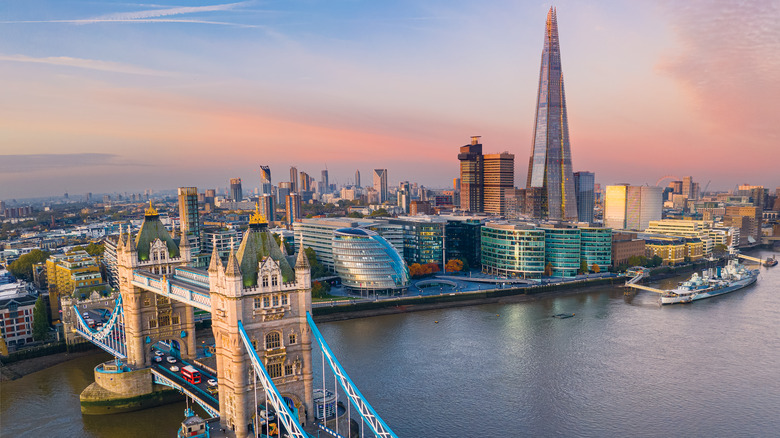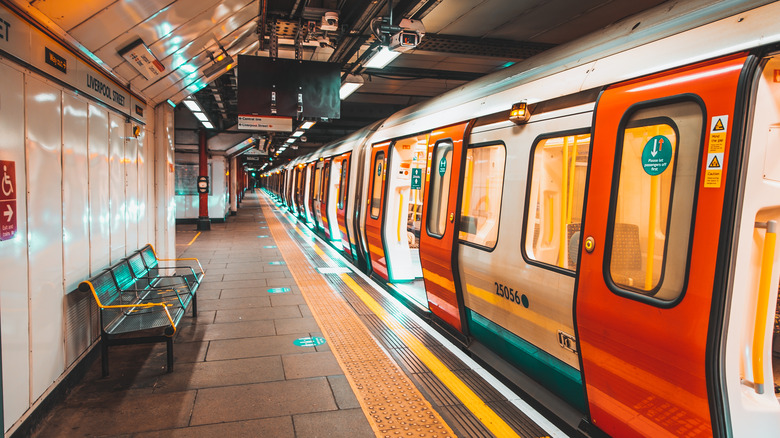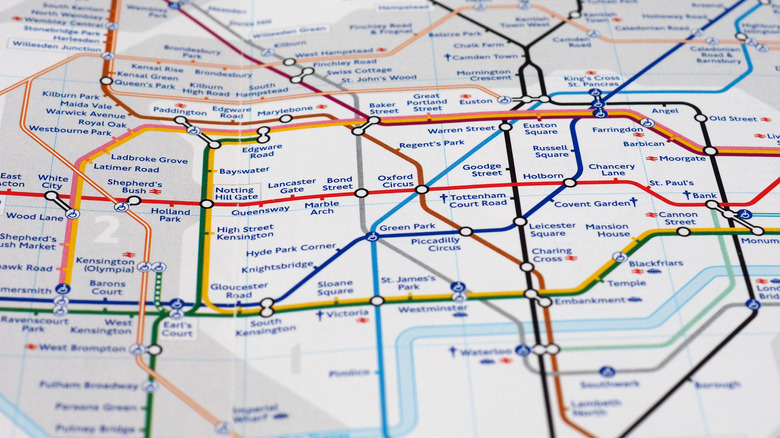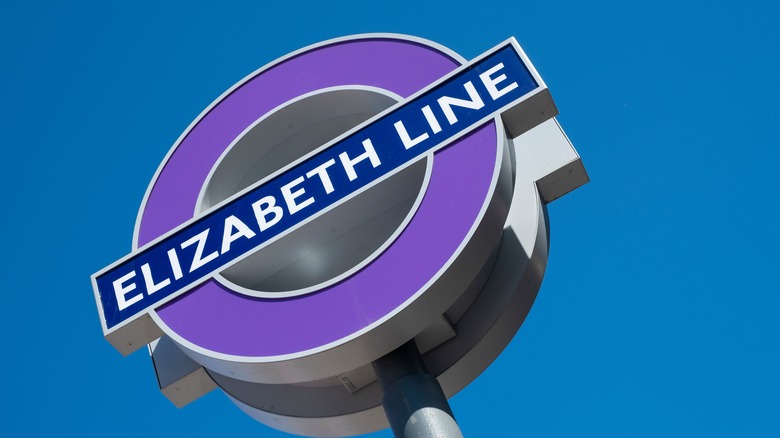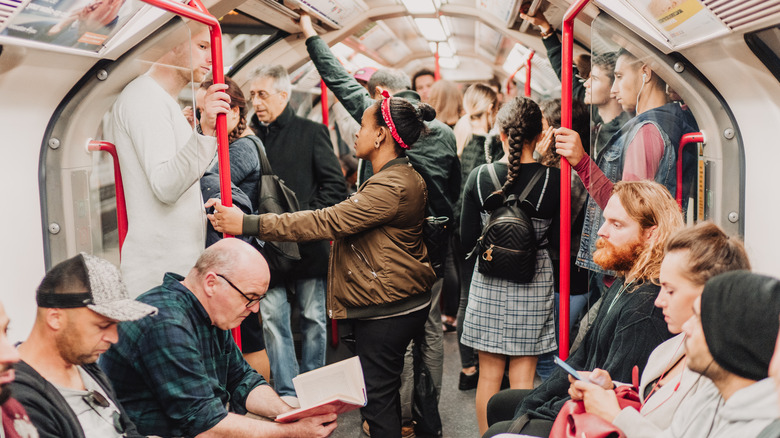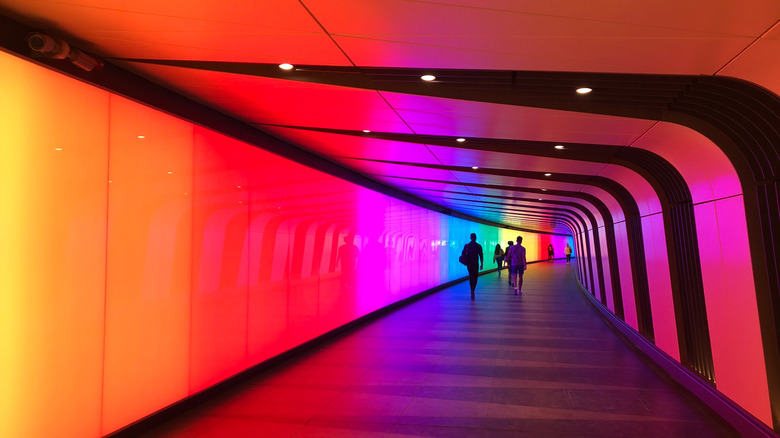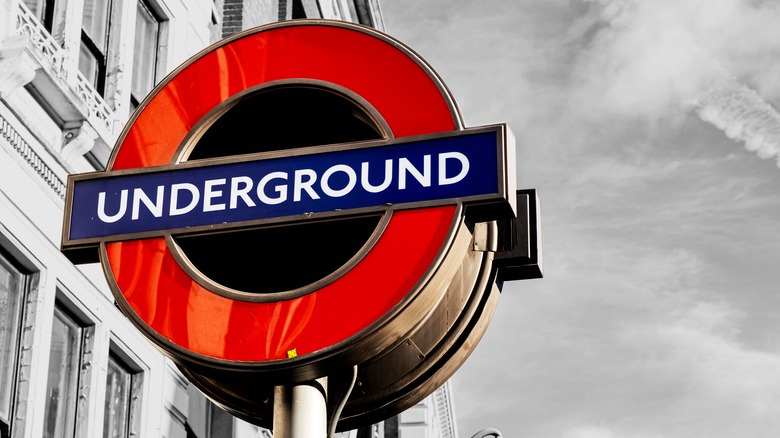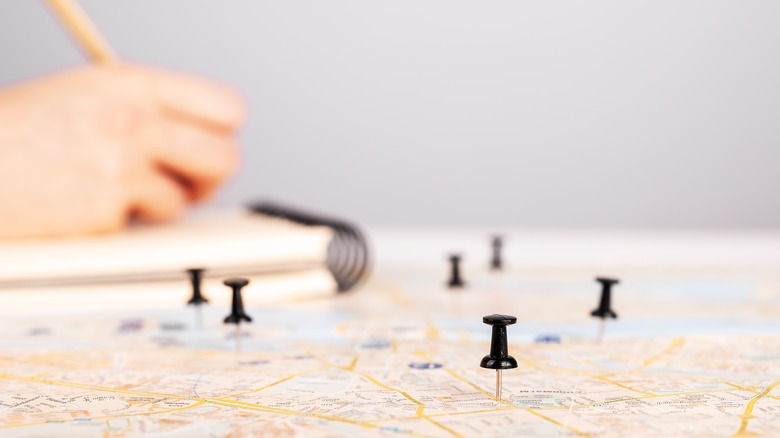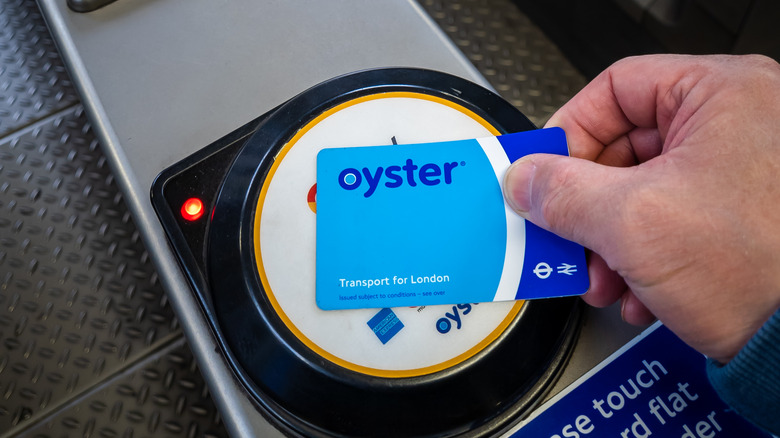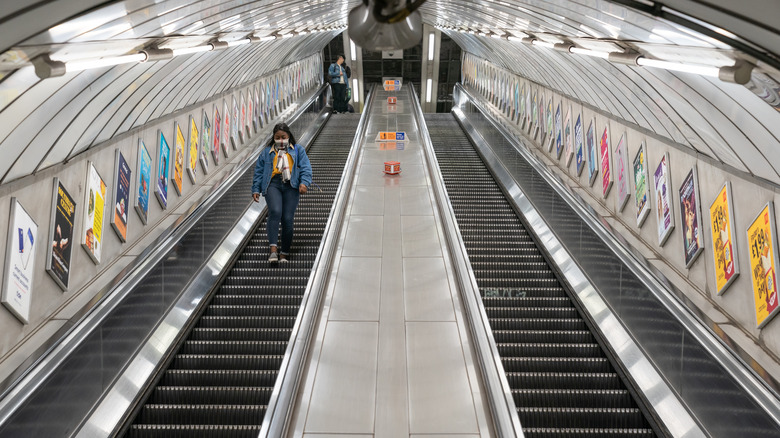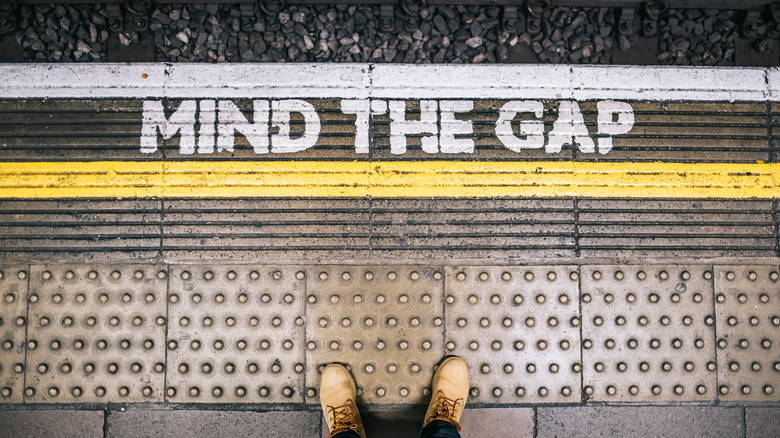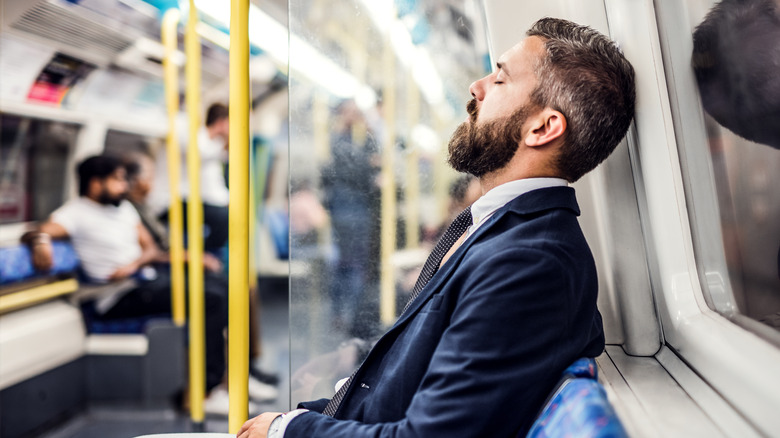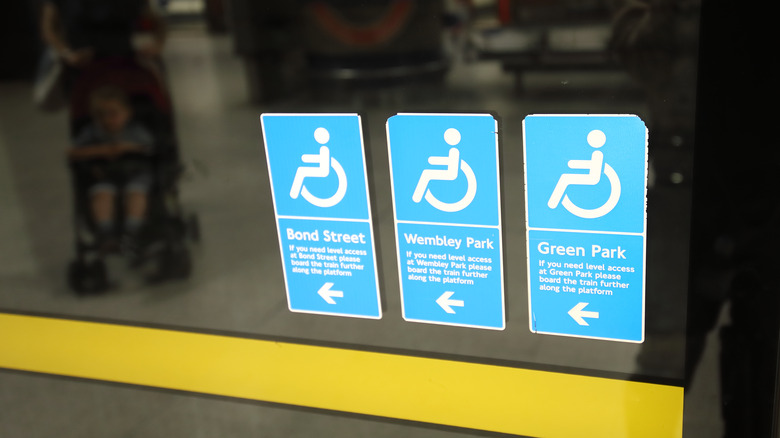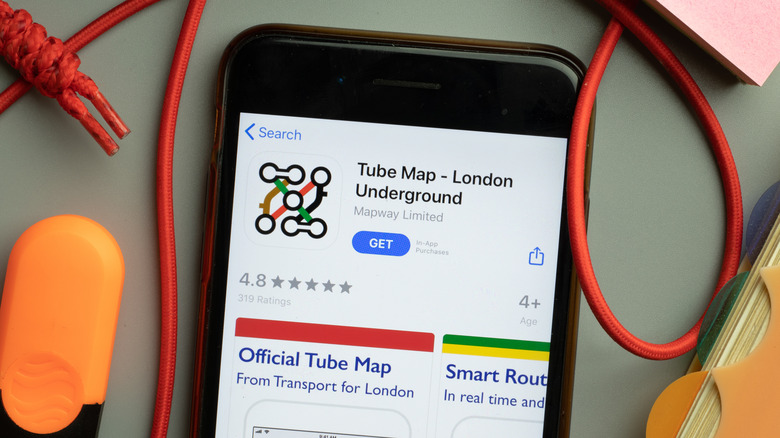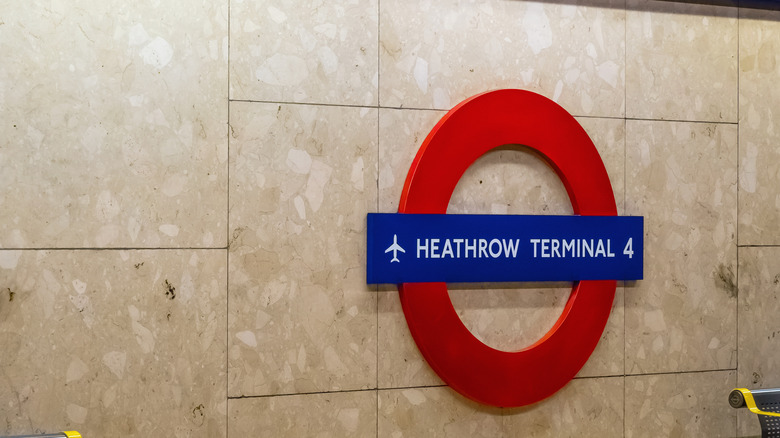Your Guide To The London Underground
The cornerstone of London's mass transportation scheme, the London Underground is a vast network that reaches into all corners of the city. It first opened in the late 1860s, though the system didn't really take off until a few decades later. For sure it has a deep history, a mass transit behemoth that's grown over the years — and continues to expand — and that progressed from steam-powered locomotives in tunnels not far below street level, to deeper trenches spurred by the onset of electrification.
Riding it for the first time can be a harrowing prospect, passengers needing to understand its wild map (it looks like it's been drawn by a 5-year-old architectural prodigy armed with a box of colored crayons), come to grips with the complexities of the type of ticket to buy, and all the while make sure that they don't upset other riders in the process. But once you comprehend the small details, the minutiae that for Londoners and regular riders is intrinsic, the underground is not a ogre to be feared, but rather a clean, safe, and (mostly) efficient method for swooshing around the heart of London and its outer fringes.
This straightforward primer will demystify the underground system that most people in London call the Tube, and have you reeling off how to whizz from Tooting Broadway to Turkey Street in no time.
Numbers game
Considering how long the Tube has been in operation, it will come as no surprise that the arteries that represent its train-carrying vessels are labyrinthine. The statistics of this huge enterprise certainly make for impressive reading, and give a clear indication as to the importance of the Underground in terms of keeping the capital of the United Kingdom ticking. Just try visiting London during a Tube strike, it's not a pleasant experience — roads are jammed with people making other arrangements and bus stops are choked with exasperated passengers, many unable to get on their bus because they are already too full to accommodate more commuters.
The Underground carries more than 1.3 billion passengers annually, and despite its name, more than half of the tracks lie above ground. The longest ride on a single line comes in at a whopping 55 kilometers, or 34 miles, a trip on the Central Line from Epping in the northeast to West Ruislip in the northwest, while train capacity (officially!) ranges from 665 to 892 passengers, depending on the type of rolling stock used.
Understanding the map
At first look, the map appears like a jumble of colored lines randomly plopped alongside one another. But there is method to the madness, with stations arranged along defined routes that typically follow a sort of geographic rubric (the Northern Line, for example, travels more or less north-south). The stations are also assigned zones that correspond to their proximity to, or distance from, central London — the higher the zone number, the further the station is from the capital's core.
Take some time to study the map, the different lines, the places they go. The majority of sights that you're likely to visit will be within the central tangle of colors, the white-shaded Zone 1 area in the middle of the map. Station names will generally correspond to the name of a street, a neighborhood, or a city landmark, and stations that have a circle on the train line next to their name are ones where you can change between different lines for free.
Color coding
As discussed earlier, the lines are divided by color, though when referring to each one, Londoners will always use the name of the line, not the color representing it — don't ask anyone where you can catch the gray line, for instance, but rather the Jubilee Line. The Underground comprises 11 main lines (Bakerloo to Waterloo & City line, alphabetically), but look at the map and you will notice a clutch of other train formats that are on it — technically these aren't part of the Tube, but they skillfully add to the visual jumble. These are lines that have opened in the near past, as the city's footprint expanded, connecting parts of London that have undergone more recent development.
They include the Docklands Light Rail (to access former docks in the east of London that went through a rapid transformation a few decades ago), the London Overground (a suburban rail service, but also run by Transport for London, or TfL, which operates the Tube), the Elizabeth Line, and more. Some of these lines might actually be the best way to get to your destination.
Rider report
You might ask, "Who uses the Underground?" The more appropriate question to ponder would be, "Who doesn't use it?" Given its immense scope — it has 402 kilometers (or about 250 miles) of track — the Tube ends up being a transportation method used by every imaginable Londoner, commuter, and of course tourist. Get on one and you'll see suited office workers, doctors, schoolchildren, revelers going to (and coming from) pubs and clubs, sports fans, shoppers, throngs of tourists young and old, and, once a year, people not wearing pants as they ride to work — don't worry, it's all in the name of harmless fun.
The official statistics, most recently published in the summer of 2019, before the pandemic, certainly make for remarkable reading. The busiest station, Waterloo, welcomes more than 100 million Underground passengers a year, with more than 1.3 billion riders overall entering and exiting the system's 272 stations.
Hours of operation
Unlike the subway system in New York City — the city that never sleeps, let's not forget — London's Tube doesn't operate 24 hours a day. So revelers hitting the town for a late one tend to rush home to catch the last Tube, take a Night Bus, or catch a taxi/private car-share service. For tourism purposes though, trains should be more than adequate to get you around, running most of the day and a large chunk of the evening and night — as a general rule of thumb, you can expect to enjoy Tube service from around 5 a.m. to Midnight throughout the week.
Note, there is a select Night Tube service on a limited number of lines, running only on Fridays and Saturdays. Started in 2016, this additional capacity was primarily aimed at people that worked night shifts, offering them an affordable, safe alternative to the Night Bus service already in place. The lines that provide round-the-clock service on these days are Central, Jubilee, Northern, Piccadilly, and Victoria.
A matter of timing
Since the Tube is used by everyone, it's busiest when people are shuttling to and from work and school. Unlike in many city transit systems across the United States, these specific hours are identified as peak hours and come with a differential in the fare charged (based on the time you enter the Tube, not when you leave it). Peak hours are listed at 6:30-9:30 a.m. and 4:00-7:00 p.m., Monday to Friday; any time outside these windows is considered off-peak.
In addition to being a more expensive time to travel, peak periods are, as the name suggests, when the Tube is at its most full, moments when space, and general bonhomie, are in short supply. Try to avoid getting aboard then when shuttling around the city. To find an actual Tube station from the street is relatively easy — look for the red circle intersected by a blue banner with the word UNDERGROUND on it. Soon enough you might want the T-shirt.
Mapping your route
TfL has run the city's transit systems — the Underground, buses, trams, river bus, and some city piers among its remit — since 2000. As such, it's the primary source for getting information on how to get from A to B, or Aldgate East to Barons Court. The 'Plan a journey' function on its site lets you plug in starting and ending points — these can be Tube stations or specific street addresses — and it spits out an itinerary using public transport, also showing the cost of the trip. You can edit the desired route to use only Tube or other connected rail lines as the method of transport if you prefer — the tool automatically defaults to show the quickest route, and this might be by bus.
When riding the Tube it goes without saying that you should get on the right train, but this is an easy thing to get wrong. Sign boards for trains located next to the platform usually promote the direction that the train is going in, not the final stop. If in doubt, always look for the signboard that has the station where you are going on it.
Buying a ticket
Welcome to what is probably the most complicated aspect of the Tube. The array of ticketing options is mind-boggling, enough to make you scream in frustration. Simply put, the one you choose is governed by the frequency of travel and distance of your journey. Unlike in a number of U.S. cities, subway fares aren't flat irrespective of length of trip, but increase as you go further, cross into different zones, or travel at peak times. The two ways people pay to ride the subway are by paying as they go or with a paper Travelcard that allows for unlimited travel for anywhere from one day to one year.
The first option is the most popular for Londoners, purchasing individual rides using a contactless bank card or phone app, or with an Oyster card (available only in stations, with a fee required to purchase one), a transit debit card that you pre-load with funds to be deducted after each ride. With the contactless system, TfL caps the amount you will pay each day, and after that rides become free. Passengers also have the option of purchasing single paper tickets, but these are more expensive than using a contactless method. Option two, Travelcards, are good if you plan to ride public transit exhaustively, but a one-day travel card will be more expensive than continuously using the contactless alternative until it hits its cap. And if all that isn't maddening enough, the fares just increased in March 2023.
Station etiquette
Every trip on the Tube can be broken down into two distinct parts. The first occurs outside the train, all the way from street level and entering the station to the particulars of where to stand on the platform — and everything in between. Once in the station, ticket machines on the sides allow you to purchase an Oyster card (or add money to it), or a paper ticket (either a single ride or Travelcard). Turnstiles have barrier doors on them that open when the ticket is presented. Paper tickets go into a slender slot on the vertical part of the turnstile and come out on top; retrieve the ticket when it pops up and the turnstile doors will open. For contactless payment, tap the reader on the top panel of the turnstile.
Once through the turnstiles, there is a usually a long, somber ride down an escalator to the platforms. Always stand on the right of the escalator, the left is for people that want to walk, and Londoners aren't shy about telling people to get out of the way if they are on the wrong side. At the bottom of the escalator look for signs to the platform you need (because you've done your homework and mapped out the route, right?) and when waiting for the train, always stand behind the yellow line. When you reach your destination, look for signs that say Way Out. To leave the station, insert your ticket or swipe your contactless medium to exit through the turnstiles.
Train etiquette
Since everyone rides these trains, and hopefully with minimal fuss, it's critical that you are aware of your surroundings and fellow passengers. You'll notice a regular announcement over the loudspeakers on the train platforms — you might even see a T-shirt with these words on it: "Mind the Gap." This is a reminder to be careful when stepping on and off the train because there is a space between the platform and curb of the carriage that is large enough for your foot to get stuck in. So tread carefully, always letting passengers off the train first.
On the train, move toward the middle of the carriage, and always place your backpack on the floor by your feet, don't carry it on your back, even if it's called a backpack, as you'll end up bashing other passengers. Don't stare at other riders, even if they look interesting or friendly — they aren't on the train to make friends or strike up a conversation with a stranger, however fascinating you might be. Always give up your seat to someone who needs it more than you, especially the priority seats located near the train doors. And don't be loud onboard — people tend to be quiet on the Tube, you should be too.
The experience onboard
For passengers used to the roominess and width of metros in many American cities, these carriages might come as a shock. They are narrow, with low ceilings and realistically only enough space for one person to stand between the parallel rows of seats (it really does feel like you're in a tube). The tunnels that the trains hurtle through are deep underground — that's why the escalators are so long — and that makes the air down here feel still and dense. Even though they are air-conditioned, carriages can be hot and stifling in the summer, and cold and damp in the winter, so plan accordingly.
During peak hours you'll be crammed together with other passengers like slices of bread, because, even if the next train is coming in two minutes, nobody wants to wait. And yet the ride, when you have space to unfold and air to breathe, is surprisingly peaceful. The trains efficiently zip through the city much faster than above-ground transportation, station names are announced before each stop, making it easy to identify when to get off, and platforms are refreshingly litter free.
Accessibility information
Back when it began operation in 1863, when the world was a wildly different beast from today, the London Underground didn't focus much, if any, attention on the thorny topic of access. Those with limited mobility had to navigate stairs, or not use the system at all. But, as Bob Dylan once wrote: "The Times They Are a-Changin'" — and constant improvements, upgrades, and installations are thankfully making the network a more equitable place to ride.
TfL produces a guide that identifies stations that allow step-free access — meaning that passengers can get from street level to the platform without having to negotiate any steps, using lifts or ramps instead — most handily on this map. Accessible stations are marked in bold blue, and while it's clear from the guide that many Tube stations are not yet step-free — only 1/3 of all them currently are — new stations are constantly being added to the roster.
Apps to track
Londoners might not need an app to maneuver through the ins and outs of the Tube, but for the rest of us, using one can make the journey a whole lot easier. Station entrances are often located at large road intersections, for obvious reasons, but when not, they can be tricky to find. Google Maps seems to be the universal default for grounding yourself, and it will definitely help you get to the station nearest you. A more integrated app is Tube Map, a widely used navigation platform that uses the official TfL Underground map as the basis for its advice and route calculation.
Citymapper also combines street and transit data to produce route planning that offers options such as Bus Only, Wheelchair Accessible, walking maps, and even the estimated cost of a taxi. The TfL app, TfL Go, allows users to plan their journey, similar to the function on its website, and get live updates on train services. Most Tube stations have free public wifi, so travelers that don't purchase a local SIM card or have data can still access the apps.
Airport transfer
The Tube can also be used to ride into the city from Heathrow Airport, one of two international airports in London that receives frequent, non-stop flights from the United States (the other is Gatwick, which is linked to the capital by the overland Gatwick Express train service). There are three Tube stations at Heathrow, all on the Piccadilly Line (that's the dark blue one!), with separate stops at Terminals 2 & 3, Terminal 4, and Terminal 5.
This really is the most cost-effective way to get into London, with the trip into the city center taking less than an hour and costing about $7. And beyond the practical benefits of such a transfer, taking the Tube from here will be a great introduction to the London Underground system — as the first stop on the line, the train won't be very full at Heathrow, allowing you to get a leisurely grip on the Tube that powers London.
